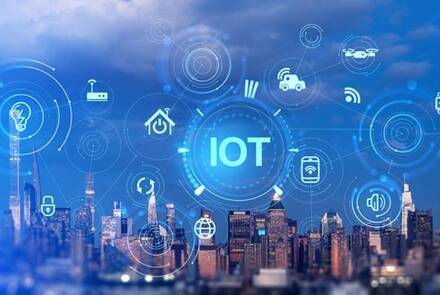Future Trends in Medicaid Technology for 2025 and Beyond
The Medicaid landscape is rapidly evolving as advances in technology drive new efficiencies, improve patient outcomes, and streamline administrative processes. As we look toward 2025 and beyond, several emerging trends in Medicaid technology are set to redefine how healthcare providers, state agencies, and beneficiaries interact with Medicaid systems. This article explores key Medicaid technology trends and offers actionable steps on how organizations can prepare for the future.
- The Rise of AI and Machine Learning in Medicaid
Artificial Intelligence (AI) and Machine Learning (ML) are transforming Medicaid Management Information Systems (MMIS). These technologies enable predictive analytics, automate claims processing, and improve beneficiary engagement.
Key Developments to Watch:
- Predictive Analytics: Identifying patterns in patient data to forecast health risks and reduce preventable hospitalizations.
- Claims Processing Automation: Using AI to expedite claims adjudication, reduce manual errors, and detect fraudulent activities.
- AI-Driven Chatbots: Providing real-time support to beneficiaries and healthcare providers, reducing the burden on customer service teams.
How to Prepare: - Invest in AI-driven MMIS platforms to reduce operational inefficiencies.
- Build data governance frameworks to ensure clean, usable data for AI models.
- Train internal teams on how to use AI tools effectively.
- Cloud-First Strategies for Medicaid IT Modernization
Cloud technology continues to be a major driver of MMIS modernization. Moving from on-premises systems to the cloud offers flexibility, scalability, and cost savings while enhancing system security and resilience.
Key Developments to Watch:
- Cloud-Native MMIS: Systems designed to operate exclusively in the cloud, enabling real-time updates and seamless scaling.
- Hybrid Cloud Deployments: Allowing Medicaid agencies to maintain some workloads on-premises while leveraging the flexibility of the cloud.
How to Prepare:
- Conduct a cloud readiness assessment to identify migration challenges.
- Work with experienced cloud migration partners to ensure a smooth transition.
- Prioritize cybersecurity measures like encryption and identity access management (IAM) in cloud deployments.
- Enhanced Interoperability and Data Exchange
Interoperability has been a long-standing goal for Medicaid systems, and it’s becoming even more critical as healthcare ecosystems become more connected. State Medicaid agencies are being driven by federal mandates to improve data sharing between providers, payers, and beneficiaries.
Key Developments to Watch:
- FHIR (Fast Healthcare Interoperability Resources) Adoption: Enabling seamless data sharing between healthcare providers and Medicaid systems.
- Cross-System Data Exchange: Facilitating the secure exchange of data between Medicaid, CHIP, and other state-administered health programs.
How to Prepare: - Invest in modernized MMIS platforms that support FHIR standards.
- Build robust data integration protocols to facilitate cross-system communication.
- Implement cybersecurity frameworks to protect sensitive beneficiary information.
- Advanced Cybersecurity for Medicaid Systems
As the sophistication of cyber threats increases, Medicaid IT systems are being targeted more frequently. Protecting sensitive beneficiary data is a top priority for Medicaid agencies.
Key Developments to Watch:
- Zero Trust Security Models: Adopting the "never trust, always verify" approach to user access.
- Advanced Threat Detection: Leveraging AI and machine learning for proactive threat detection and response.
- Privacy-First Data Governance: Ensuring compliance with HIPAA, CMS guidelines, and other regulatory standards.
How to Prepare: - Transition to a Zero Trust security framework.
- Conduct regular penetration testing and vulnerability assessments.
- Train internal teams on security best practices and establish an incident response plan.
- Focus on User-Centric Design and Accessibility
Medicaid systems must prioritize usability and accessibility to ensure that beneficiaries, healthcare providers, and administrators can access and use these platforms effectively. A user-friendly design improves system adoption and satisfaction.
Key Developments to Watch:
- Mobile-First Interfaces: Designing systems that work seamlessly on mobile devices.
- Accessibility Compliance: Ensuring compliance with accessibility standards like Section 508 and WCAG.
How to Prepare: - Prioritize user experience (UX) design during MMIS modernization projects.
- Test systems for accessibility compliance at every stage of development.
- Conduct user experience research with beneficiaries to improve design choices.
- The Role of Data Analytics and Business Intelligence (BI)
Data analytics and BI tools are enabling Medicaid agencies to extract valuable insights from vast datasets. These insights inform policy decisions, improve beneficiary outcomes, and streamline operational processes.
Key Developments to Watch:
- Real-Time Analytics Dashboards: Enabling Medicaid administrators to track key metrics and KPIs in real time.
- Data-Driven Policy Making: Leveraging insights to design more effective policies and allocate resources efficiently.
How to Prepare: - Invest in BI tools and real-time analytics platforms.
- Train Medicaid administrators on how to use dashboards for decision-making.
- Establish clear data governance policies to ensure data accuracy and integrity.
Conclusion
The future of Medicaid technology is defined by AI, cloud computing, data interoperability, and enhanced cybersecurity. These trends are reshaping Medicaid IT systems, driving efficiency, and improving service delivery for beneficiaries. Organizations that proactively prepare for these changes will be better positioned to meet regulatory requirements and provide better services to beneficiaries.
Is your organization ready for the future of Medicaid technology? Contact Trigyn today to learn how we can help you modernize your Medicaid IT systems.






